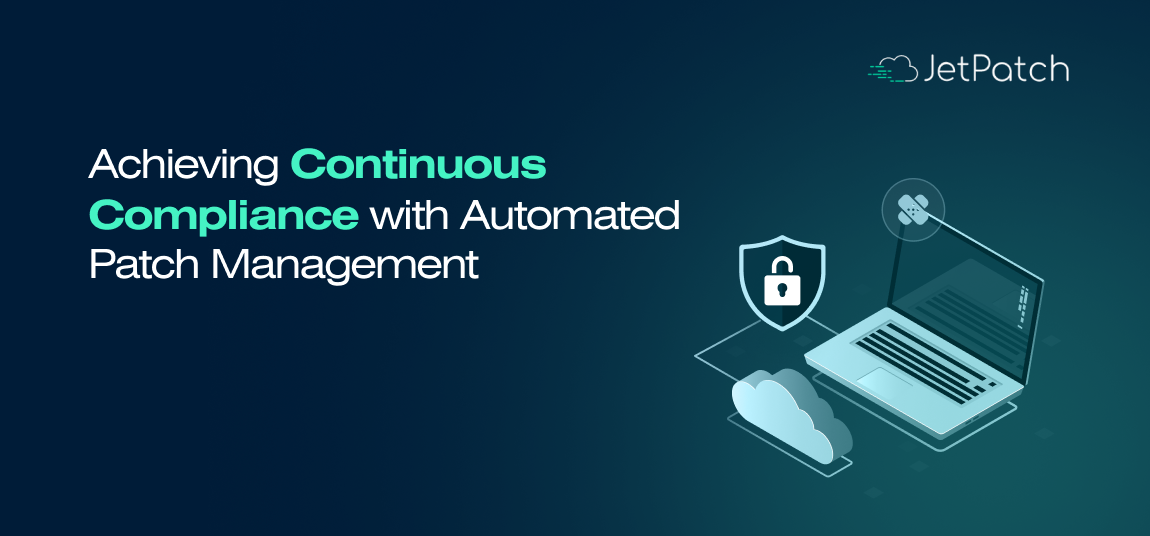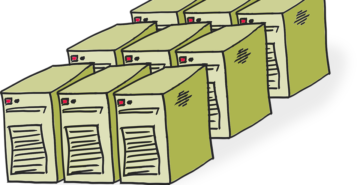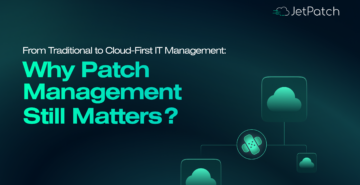Introduction
In 2023, cyber threats surged to unprecedented levels, with data from IBM’s Cost of a Data Breach report revealing that the average cost of a data breach hit $4.45 million—a record high. Unpatched vulnerabilities were a significant contributor to these breaches, underscoring the critical importance of effective patch management. In fact, research by the Ponemon Institute, as reported by Security Magazine, indicates that nearly 60% of data breaches in the past year could have been prevented with timely patching.
As regulatory requirements such as GDPR, HIPAA, and SOX continue to evolve, maintaining continuous compliance has become a top priority for organizations worldwide. The challenge lies in managing these compliance demands across complex IT infrastructures, where manual processes often fall short. This is where automated patch management comes into play, offering a powerful solution to not only secure systems but also ensure they meet regulatory standards without the need for constant manual oversight.
In this article, we will delve into the role of automated patch management in achieving continuous compliance, exploring how it can be strategically implemented to protect your organization from both security breaches and regulatory penalties.
Understanding Automated Patch Management in the Context of Compliance
What is Automated Patch Management?
Automated patch management is a system that streamlines the process of deploying software updates across various devices within an organization’s IT infrastructure. This system automates the detection of vulnerabilities, the deployment of patches, and the verification of installations, ensuring that all devices remain protected against known cybersecurity threats.
Why It’s Indispensable for Maintaining Compliance:
In environments regulated by standards such as GDPR for data privacy, HIPAA for healthcare information security, and PCI DSS for payment data security, compliance is not merely about adhering to laws—it’s about demonstrably managing and mitigating risks associated with data security. Automated patch management is crucial because it ensures that security patches are applied in a timely manner, significantly reducing the window of vulnerability and, by extension, the organization’s risk profile.
Relevance to Compliance:
Automated patch management fortifies compliance strategies by:
- Ensuring Timeliness and Consistency: It automates the deployment of security patches, minimizing the time systems remain vulnerable to exploits. This is crucial for compliance with regulatory frameworks that mandate swift vulnerability management.
- Audit Trails and Compliance Reporting: Automated systems generate comprehensive logs and reports detailing when and how patches were applied, essential for regulatory audits and compliance verification.
- Proactive Risk Management: By systematically updating systems, organizations can preempt potential breaches that could lead to non-compliance and severe penalties.
Role in IT Governance:
Integrating automated patch management into broader IT governance frameworks is vital for robust compliance management. It empowers IT leaders with granular control over the patch management process through centralized management consoles, offering real-time insights into the organization’s security posture. This proactive approach not only aligns with but enhances compliance and governance protocols by ensuring that all security updates meet corporate policies and regulatory requirements effectively.
The Critical Role of Continuous Compliance in IT Security
Defining Continuous Compliance:
Continuous compliance refers to the ongoing adherence to legal, regulatory, and technical standards throughout an organization’s IT operations. This proactive approach is designed to ensure that all systems, especially those handling sensitive data, operate within the bounds of statutory and industry regulations at all times.
Necessity of Continuous Compliance:
In the wake of increasing cyber threats and stringent data protection laws, continuous compliance has become indispensable for avoiding regulatory penalties and ensuring the integrity of IT systems. For industries like healthcare, finance, and e-commerce, where data breaches can have catastrophic consequences, maintaining continuous compliance is not just a regulatory requirement but a cornerstone of operational security.
Compliance in Real-Time:
Automated patch management systems facilitate real-time compliance by providing tools that continuously scan, identify, and address vulnerabilities as soon as they are discovered. This capability is crucial for compliance officers and IT managers who are responsible for the security and integrity of large-scale IT infrastructures.
Intersection with Patch Management:
Regular and automated patching plays a vital role in continuous compliance by ensuring that security vulnerabilities are promptly closed. This is particularly important for compliance with frameworks like SOX (Sarbanes-Oxley Act), NIST (National Institute of Standards and Technology) guidelines, and FISMA (Federal Information Security Management Act), which require robust security measures to protect from internal and external threats.
Key Regulatory Frameworks Influencing Continuous Compliance:
- GDPR (General Data Protection Regulation): Mandates strict data protection and privacy for individuals within the European Union and the European Economic Area.
- HIPAA (Health Insurance Portability and Accountability Act): Requires the protection and confidential handling of protected health information.
- PCI DSS (Payment Card Industry Data Security Standard): Ensures that all companies that accept, process, store, or transmit credit card information maintain a secure environment.
Role of Automated Patch Management in Ensuring Compliance:
Automated patch management is instrumental in enforcing these regulatory frameworks. It ensures that all systems are updated with the latest security patches, thereby reducing the risk of data breaches and non-compliance. Additionally, the automation of patch deployment allows organizations to maintain a consistent security posture, which is critical for meeting the continuous monitoring and reporting requirements laid out by regulatory bodies.
According to a 2023 study by [Gartner](https://www.gartner.com/en/reports/xyz), companies that implement automated patch management solutions see a 50
Benefits of Automated Patch Management for Continuous Compliance
Streamlining Compliance Processes:
Automated patch management systems are integral to compliance automation, significantly streamlining the enforcement of security policies and the application of necessary security patches. This automation reduces the administrative burden on IT staff, allowing for a more focused approach to strategic compliance oversight and IT security governance. Efficient patch management ensures compliance with critical frameworks like ISO/IEC 27001 and COBIT, which mandate regular updates and audits of security practices.
Reducing Compliance Risks:
By automating the deployment of patches, organizations minimize the risk of non-compliance associated with human error and oversight. This is crucial for adhering to stringent data protection regulations such as GDPR and CCPA, which penalize security negligence heavily. Automated systems ensure that all endpoints are consistently safeguarded against vulnerabilities, thereby maintaining the integrity required under PCI DSS and FISMA standards.
Cost Efficiency and Resource Optimization:
Implementing automated patch management translates into significant cost savings through optimized resource allocation. By reducing the manpower needed for manual patching processes, organizations can redirect their IT resources toward enhancing IT compliance solutions and cybersecurity measures. Moreover, the prevention of compliance-related fines and breach-related costs by maintaining a robust security posture can result in substantial financial benefits.
Improving Audit Readiness:
Automated patch management enhances audit readiness by systematically logging all patching activities. This consistent documentation is critical for IT compliance audits, providing verifiable proof of compliance with laws like Sarbanes-Oxley Act for financial practices and Health Information Trust Alliance (HITRUST) for healthcare information security. Such documentation ensures smoother audits, reducing the likelihood of penalties and disruptions.
Enhancing Overall IT Security Posture:
Beyond just compliance, automated patch management bolsters the overall IT security posture by mitigating the exploitation risks of unpatched vulnerabilities. In light of recent incidents like the CrowdStrike breach, where delayed patching led to significant data exposure, the importance of rapid vulnerability management has become more evident. Read more about the CrowdStrike incident and its implications on our blog.
Implementing Automated Patch Management for Compliance Success
Achieving compliance in today’s complex IT environments requires more than just applying patches—it demands a comprehensive strategy that integrates seamlessly with existing systems and automates the entire lifecycle of patch management. JetPatch’s platform is designed to do exactly that, providing organizations with a robust solution for maintaining continuous compliance across various regulatory frameworks.
Step-by-Step Implementation Guide:
- Assessing IT Infrastructure and Compliance Requirements:
- The first step is to thoroughly evaluate your current IT infrastructure and identify compliance requirements based on industry-specific regulations such as GDPR, HIPAA, or PCI DSS. JetPatch simplifies this process by offering tools for asset discovery, which catalog all devices and applications within your environment, ensuring that nothing is overlooked when it comes to compliance coverage.
- Choosing a Compliant Automated Patch Management Solution:
- JetPatch is an all-encompassing solution that supports patching across multiple operating systems, including Windows, Linux, and various Unix flavors. Its multi-OS support ensures that your entire IT environment remains compliant, regardless of the diversity of systems in use. Additionally, JetPatch’s integration with vulnerability scanners like Tenable, Qualys, and Rapid7 allows for continuous vulnerability assessment, ensuring that patches are prioritized based on risk and business impact.
- Integrating Patch Management into Existing Compliance Frameworks:
- JetPatch goes beyond basic patch deployment by integrating with IT Service Management (ITSM) platforms like ServiceNow and Jira. This integration facilitates a smooth workflow where patching activities are automatically logged, tracked, and reported, thereby aligning patch management with broader IT governance frameworks. The real-time patch governance dashboard provides a single-pane-of-glass view into the patch management process, improving visibility and reducing compliance risks.
- Continuous Monitoring, Documentation, and Reporting:
- Compliance isn’t a one-time task; it requires continuous monitoring and documentation. JetPatch automates these processes by generating comprehensive reports on patch compliance, vulnerability assessments, and remediation activities. These reports are essential during audits, as they provide proof of ongoing compliance efforts. The patch activity log ensures that every action is documented, making it easier to demonstrate compliance to auditors and regulators.
Best Practices for IT Compliance:
- Regular Audits: Regularly audit your systems to ensure that all patches are applied uniformly and that there are no blind spots in your compliance strategy. JetPatch’s real-time gap analysis feature is particularly useful here, as it identifies missing patches and prioritizes them for deployment.
- Managing Legacy Systems: Legacy systems often present unique challenges in patch management. JetPatch addresses this by offering patch rollback functionality, allowing you to revert to a previous state if a patch causes compatibility issues, thereby maintaining compliance without risking system stability.
Overcoming Challenges Specific to Compliance:
- Handling Exceptions and Managing Patch Conflicts: JetPatch provides a patch readiness evaluation feature that assesses endpoints before deployment, minimizing the risk of conflicts. If an issue does arise, the system’s rollback capabilities ensure that compliance is maintained while troubleshooting occurs.
- Ensuring Compatibility Across Diverse IT Environments: JetPatch supports patching across more than 15 platforms, making it adaptable to even the most diverse IT environments. This cross-platform support is crucial for maintaining compliance in organizations with complex infrastructures.
Case Study: Achieving Compliance with Automated Patch Management
Governmental IT Services Provider: Ensuring Continuous Compliance through JetPatch
A leading governmental IT shared services provider, responsible for managing one of the most extensive SAP infrastructures in North America, faced significant challenges in maintaining compliance across its complex IT environment. The provider’s traditional patch management processes were cumbersome, involving three different tools for managing Windows, Linux, and Solaris systems. This fragmentation led to inefficiencies in compliance reporting and increased the risk of security vulnerabilities.
The Challenge:
The organization needed to streamline its patch management processes to operate with greater agility and to ensure compliance with stringent regulatory requirements. The complexity of managing multiple systems across different environments led to lengthy and incomplete compliance reporting, posing a significant risk to the organization’s security posture.
The Solution:
JetPatch was implemented to automate the entire patch management process, transforming it from a manual, error-prone operation into an efficient, governed workflow. JetPatch’s automation workflow templates standardized the patching process, while its agent management functionality optimized the deployment and monitoring of various IT tools across hybrid environments. This comprehensive approach not only reduced the manual effort involved in patching but also ensured continuous compliance across all systems.
Key Outcomes:
- 75% Reduction in Time to Remediation: The time required to remediate vulnerabilities was drastically reduced from 121 days to just 30 days, significantly enhancing the organization’s ability to respond to threats.
- 70% Reduction in Manual Efforts: The automation provided by JetPatch reduced the manual labor involved in the patching process by 70%, freeing up IT resources to focus on other critical tasks.
- Continuous Compliance: By automating the patch management process, the organization was able to maintain continuous compliance, reducing the risk of security exposures and ensuring that all regulatory requirements were consistently met.
This case study demonstrates the real-world impact of JetPatch’s automated patch management solution, particularly in complex, regulated environments where continuous compliance is critical. The ability to automate and optimize patch management processes not only enhances security but also streamlines compliance efforts, making it easier for organizations to meet their regulatory obligations.
Future Trends in Automated Patch Management and Compliance
As cyber threats continue to evolve in both sophistication and frequency, the future of automated patch management is poised to be shaped by several key trends, many of which are driven by advancements in artificial intelligence (AI) and machine learning (ML).
The Rise of AI-Driven Compliance Automation
AI-driven compliance is rapidly transforming how organizations manage regulatory requirements and mitigate risks. According to a report by the Cloud Security Alliance, 69% of business enterprises believe AI is essential for cybersecurity, particularly in automating compliance processes and enhancing risk management. AI tools are increasingly being used to automate risk assessments, compliance monitoring, and incident response, significantly reducing the time and effort required to maintain compliance in dynamic IT environments (Home | CSA).
Predictive Analytics for Proactive Defense
One of the most promising trends in automated patch management is the integration of predictive analytics. AI-powered systems can now analyze historical data, patterns, and behaviors to predict future vulnerabilities before they can be exploited.
This proactive approach allows organizations to address potential security issues in advance, rather than reacting to breaches after they occur. Predictive analytics is particularly useful in environments where the Mean Time to Remediate (MTTR) vulnerabilities has increased, with recent data showing that MTTR has grown from 60 to 65 days between 2022 and 2023 (Action1 Patch Management).
Real-Time Threat Intelligence and Anomaly Detection
Real-time threat intelligence is becoming a cornerstone of modern cybersecurity strategies. AI-driven patch management systems continuously gather and analyze data from various sources, providing up-to-date information about the latest threats and attack vectors. This capability enables organizations to respond swiftly to emerging threats and apply relevant patches before vulnerabilities can be exploited. The implementation of real-time anomaly detection through machine learning algorithms is proving invaluable in identifying and mitigating risks, further enhancing the security posture of organizations (Endpoint Magazine).
Integration with Broader Cybersecurity Ecosystems
Future advancements in automated patch management will likely focus on deeper integration with broader cybersecurity ecosystems. This includes seamless connectivity with vulnerability scanners, SIEM (Security Information and Event Management) systems, and other security tools to create a unified defense strategy. By integrating these systems, organizations can achieve a more comprehensive view of their security landscape, ensuring that patches are prioritized and deployed based on real-time risk assessments and compliance needs (Daffodil Software) (ISACA).
The Growing Importance of AI-Driven Decision Making
As cyber criminals increasingly leverage AI to launch sophisticated attacks, organizations must adopt AI-driven decision-making in their cybersecurity practices. AI systems can automate the detection of vulnerabilities, prioritize them based on potential impact, and deploy patches across vast IT environments with minimal human intervention. This not only improves the efficiency of patch management but also ensures that organizations remain compliant with the ever-evolving regulatory landscape (Action1 Patch Management).
Adapting to Regulatory Changes
The introduction of laws like the EU AI Act, which governs the use of AI technologies, highlights the need for organizations to stay ahead of regulatory changes. Automated patch management solutions that incorporate AI will play a critical role in helping organizations adapt to these new regulations by ensuring that compliance processes are continuously updated and aligned with the latest legal requirements (Home | CSA).
Conclusion
Automated patch management is a crucial component in maintaining continuous compliance and a robust security posture.
By leveraging JetPatch’s automated patch management, organizations can ensure that vulnerabilities are addressed swiftly and systems remain compliant with industry regulations.
Automated patch management can dramatically reduce the time to remediation, minimize manual efforts, and improve overall security, all while ensuring continuous compliance across complex IT environments. Explore more here.



